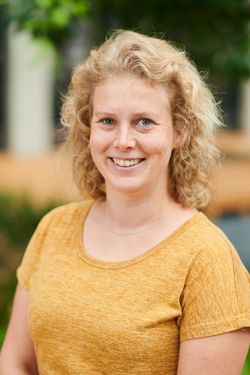
Sessions in which George Rhee participates
Tuesday 28 June, 2022
The Colorado river supplies water to forty million people. The river system in crisis due to; an ongoing twenty year drought, a historical overallocation of river flows and an increasing demand for water due to an increasing population. One historical cause of the crisis was the assumption one hundred years ago by the signatories of the Colorado River Compact that the natural flows of the Colorado River do not vary significantly on timescales longer than a decade. Since then, one hundred a...
Sessions in which George Rhee attends
Monday 27 June, 2022
Free, in person and onlineWe will hold a practical, skills-based workshop introducing openDendro -- an open-source framework of the base analytic software tools used in dendrochronology in both the R and Python programming languages. openDendro is a new unified set of tree-ring analysis tools in open-source environments that provides the necessary baseline for dendro...
Tuesday 28 June, 2022
Although numerous proxy-based climate reconstructions have been developed and despite the prevalence of relatively long instrumental records throughout Europe, reliable information about past climate is still lacking in some regions, particularly eastern parts of the continent. This issue is linked to limitations in data quality and large uncertainties in existing records. The REPLICATE project aims to fill this spatial paleoclimatic and data quality gap by applying a tree-ring multi-param...
We present a 211-year tree-ring-based reconstruction of the annual mean flow of the Sainte Anne River, Gaspésie, Québec, Canada. The river traverses through the interior of the Gaspé Peninsula where the instrumental hydrological and climatic records are particularly short. This is the first streamflow/soil moisture reconstruction between the Hudson River and north-central Québec, filling a substantial geographical gap along the eastern North American margin, and adding to the only three ex...
Evidence of volcanic cooling and its human impacts has been described for various regions of the globe over the past several centuries to millennia, derived from paleoclimatic and historical data. Due to its remote location, detailed accounts of such impacts over Northwestern North America (NWNA) are still quite limited. Here we use a newly expanded tree-ring density network (derived from blue intensity as well as maximum latewood density parameters) to assess the climatic and human impact...
The spatial scale of climate fluctuations, or effective spatial degrees of freedom (ESDOF), depends on the timescale and the forcing: while local scale variability between far away locations may be independent on short timescales, they may become coherent over sufficiently long timescales, or if they are driven by a common forcing. While ESDOF have been estimated from instrumental data over the historical period and climate model simulations, it remains difficult to perform such analysis o...
"Emerging in the early 20th century, the scientific study of tree-rings has a rich but under-cultivated history. This project reviews the historiography (or the history of historical writing) of dendrochronology. From the pioneering work of A.E. Douglass and others to the establishment of institutions dedicated to advancing dendrochronology by the 1950s, the field has secured its place as an ensemble of techniques to interpret tree rings, with applications in archeology, climatology, ecolo...
Climate extremes are driven by a combination of thermodynamical and dynamical factors. In Europe, the primary dynamical driver of summer climate extremes is the position of the jet stream over the Europe-North Atlantic (EU) region. To study long-term variability in the position of the EU jet, as well as its potential impact on past climate extremes and human systems, we have reconstructed EU jet variability over the past 800+ years (1200-2005 CE). To accomplish this, we have combined five ...
In the context of climate and environmental change, the boreal forest is subject to potential changes in structure and function. Stand-level physiological models can be used to predict these responses over time and to understand the interaction between tree ecophysiological processes and climate variability. We present here a project that aims to develop potential growth scenarios for Canadian boreal forest stands based on the characterization of their ecosystem fluxes using the MAIDEN mod...
Fire regimes shaped forest ecosystems for centuries in the southwestern United States prior to a century of fire exclusion. Tree-ring fire history studies have been vital to our ecological understanding of fire regimes and to inform management. Regional-scale synthesis efforts have revealed the strong connection between fire and climate, but by focusing on coarse-scale patterns over time, such studies may have overlooked finer-scale interactions of fire, climate, vegetation, and human acti...
We report on research to develop quantitative, annually resolved, multi-century, tree-ring reconstructions of streamflow for 12 interstate river systems in eight states (Alabama, Florida, Georgia, Louisiana, Mississippi, North Carolina, South Carolina, and Virginia) in the South Atlantic Gulf Basin (AGB) of the southeastern United States.We used a nested principal components regression method to develop annually resolved tree-ring reconstructions of warm-season (March-October streamflo...
Wednesday 29 June, 2022
Dendrochronology is considered one the most precise of all the scientific dating techniques. However, it requires long sequences of tree rings and a master record for both the species and region in question. At the University of Groningen, we have been pioneering a new approach to dating that combines the precision of dendrochronology with the versatility of radiocarbon dating. It relies on the detection of spikes in the annual radiocarbon record, thought to b...
Current and projected changes in climate are estimated to be from 10 to 100 times faster than the natural adaptive capacity of trees whose generation times are long. As extreme climatic events are becoming more frequent and exert a strong selection pressure on tree populations, there is an urgent need to better characterize the genetic variability involved in the response of trees to climate. There is currently a lack of knowledge on the role of genetic variability in tolerance to climatic...
Rescheduled from June 28th to June 29th
Thursday 30 June, 2022
The assessment of pre-instrumental climate variability during the Common Era (CE) has been a key element of IPCC reports and was recently emphasized by showing a single temperature reconstruction as the first figure in the 2021 Summary for Policymakers (SPM). This reconstruction is derived from dozens of proxy records including tree-rings, corals, ice cores and sediments, and displays the course of global temperatures over the past 2000 years. Show casing a single study for paleoclimate co...
"Maximum latewood density (MXD) is the most sensitive proxy for reconstructing temperature variations over past centuries to millennia. However, the development of long MXD chronologies has lagged far behind that of ring width chronologies, especially in North America. Among a handful of millennial MXD records across the northern hemisphere, only a few are from North American sites.In this study, we fill this data gap by developing a millennial MXD data network from an unprecedented...
Tree-ring records have been used extensively to reconstruct past streamflow variability. Annually resolved estimates for several centuries prior to observations, and in some cases millennia, have been produced from dendroclimatic proxies. However, despite an often strong hydroclimatic signal embedded in the rings, some factors limit the skill of such reconstructions, including human interference with the hydrological cycle. We examine the relationship between local output...
In their book chapter in 2011 Gagen et al. (2011) highlighted the need for stable isotope dendroclimatology to move beyond studies that simply demonstrate ‘potential’. This symposium, more than a decade since this publication, will focus on dendrogeochemical studies that demonstrate that the field has moved beyond studies focused on ‘potential’. In particular, this session will strive to identify compelling new insights into unique aspect...
